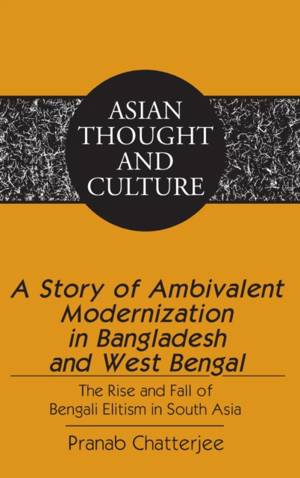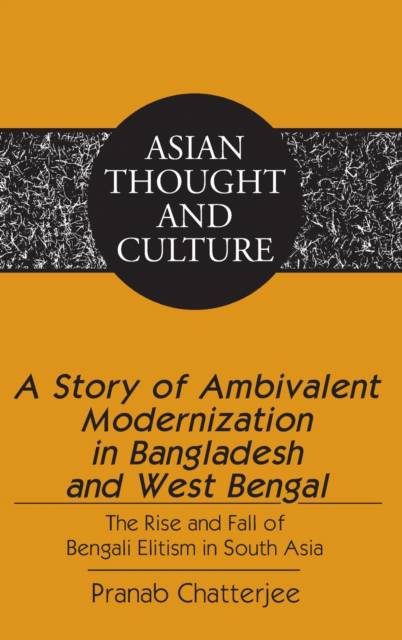
- Afhalen na 1 uur in een winkel met voorraad
- Gratis thuislevering in België vanaf € 30
- Ruim aanbod met 7 miljoen producten
- Afhalen na 1 uur in een winkel met voorraad
- Gratis thuislevering in België vanaf € 30
- Ruim aanbod met 7 miljoen producten
Zoeken
A Story of Ambivalent Modernization in Bangladesh and West Bengal
The Rise and Fall of Bengali Elitism in South Asia
Pranab Chatterjee
€ 199,45
+ 398 punten
Omschrijving
This book details the evolution of Bengali culture (in both Bangladesh and West Bengal) since antiquity and argues for its modernization. Originally peripheral to Hindu civilization based in North India, Bengali culture was subjected to various forms of Sanskritization. Centuries of invasions (1204-1757) resulted most notably in the Islamization of Bengal. Often there were conflicts between Sanskritization and Islamization. Later colonization of Bengal by Britain (1757) led to a process of Anglicization, which created a new middle class in Bengal that, in turn, created a form of elitism among the Bengali Hindu upper caste. After British rule ended (1947), Bengali culture lost its elitist status in South Asia and has undergone severe marginalization. Political instability and economic insufficiency, as reflected by many quantitative and qualitative indicators, are common and contribute to pervasive unemployment, alienation, vigilantism, and instability in the entire region. A Story of Ambivalent Modernization in Bangladesh and West Bengal is appropriate not only for Bengali intellectuals and scholars but for sociologists, political scientists, cultural anthropologists, historians, and others interested in a case study of how and why a given culture becomes derailed from its path toward modernization.
Specificaties
Betrokkenen
- Auteur(s):
- Uitgeverij:
Inhoud
- Aantal bladzijden:
- 294
- Taal:
- Engels
- Reeks:
- Reeksnummer:
- nr. 65
Eigenschappen
- Productcode (EAN):
- 9781433108204
- Verschijningsdatum:
- 28/12/2009
- Uitvoering:
- Hardcover
- Formaat:
- Genaaid
- Afmetingen:
- 156 mm x 234 mm
- Gewicht:
- 612 g

Alleen bij Standaard Boekhandel
+ 398 punten op je klantenkaart van Standaard Boekhandel
Beoordelingen
We publiceren alleen reviews die voldoen aan de voorwaarden voor reviews. Bekijk onze voorwaarden voor reviews.











